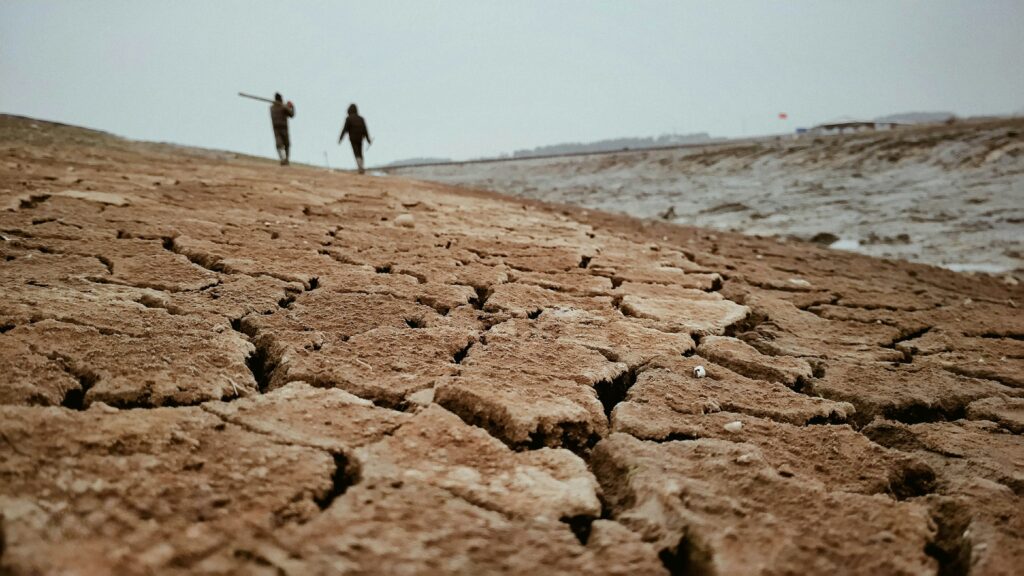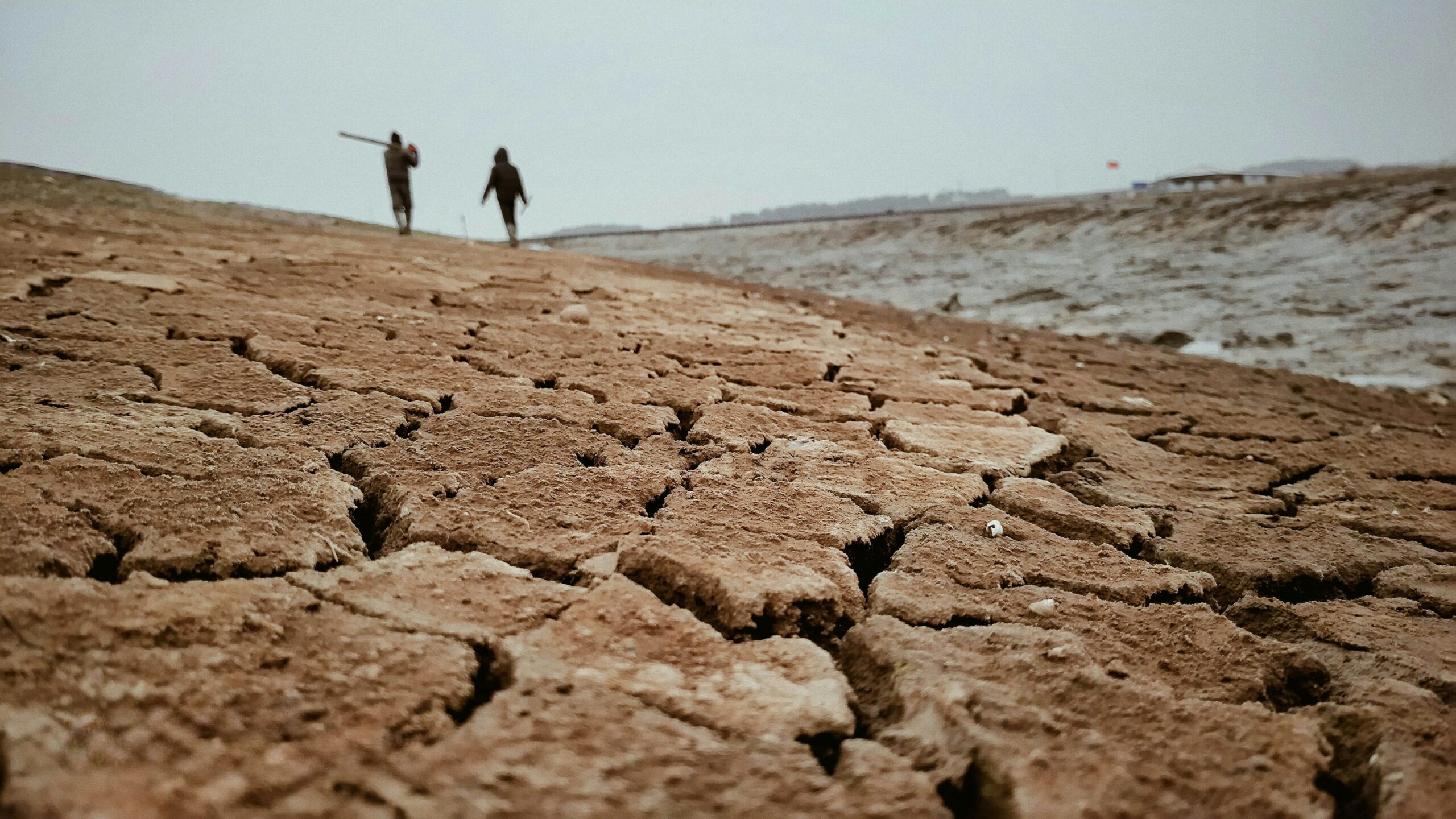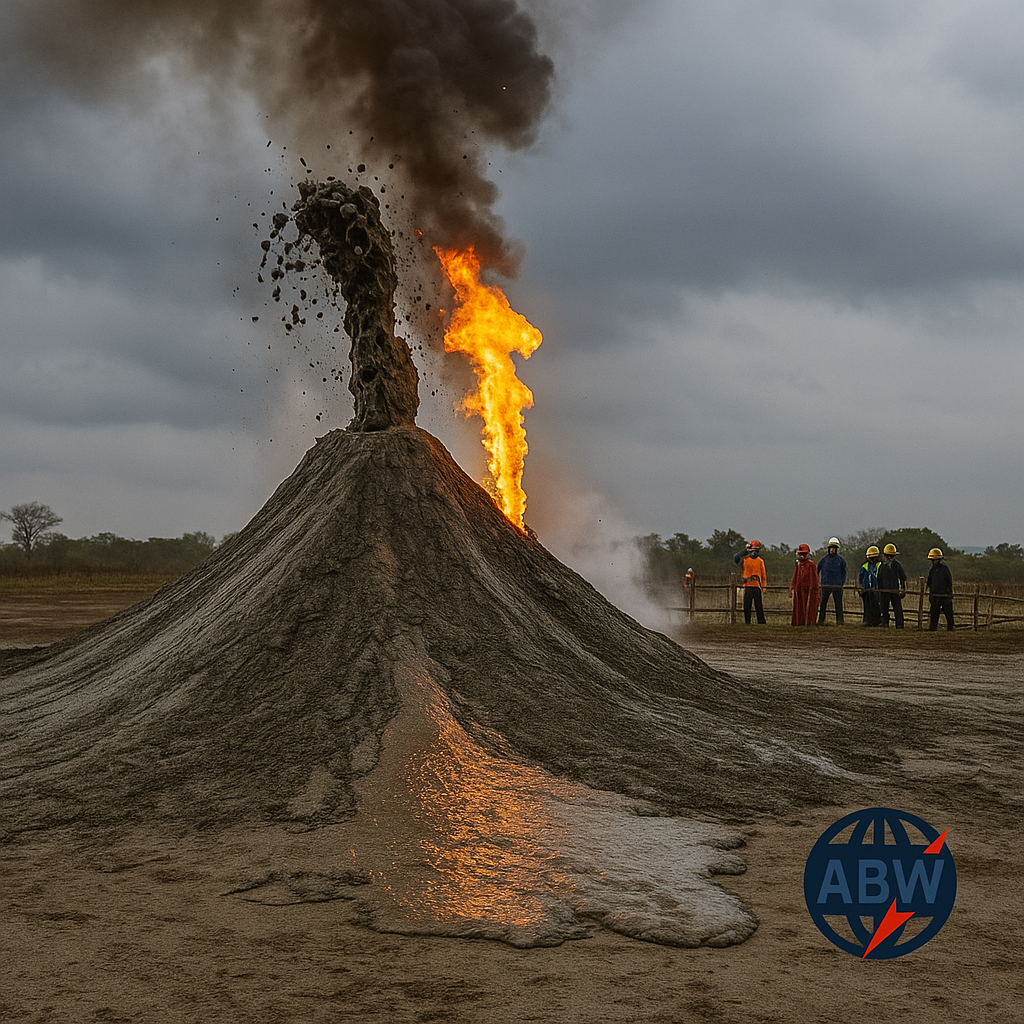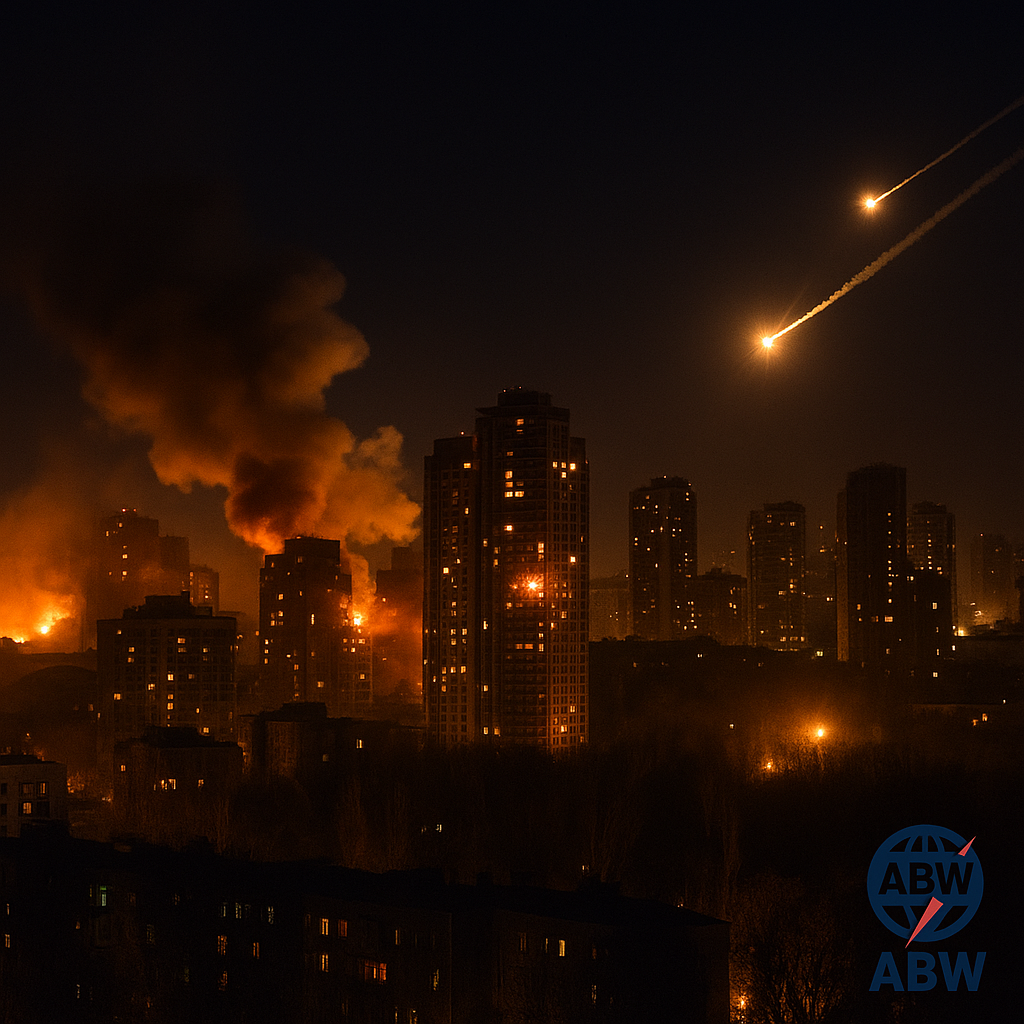Syria drought crisis. Across the valleys and plains of Hama, Aleppo, Raqqa and Deir ez-Zor, once-reliable fields lie bare, their furrows chalked to dust. In Seqalbia, a farmer who normally reaps 400–500kg of wheat per dunum (≈0.1 hectare) says the land barely returned a third of that this season. In bread lines around Hama and Damascus, families count coins twice, then borrow for loaves. Aid agencies call it the worst dry spell in 36 years, and the numbers tell a stark story: wheat harvests slashed by around 40%, an FAO-estimated shortfall of 2.73 million tonnes—roughly the annual dietary needs of 16.25 million people—on top of a population already battered by war, poverty and displacement. Reuters+1
The Syria drought crisis is not only a meteorological event. It is the culmination of cascading shocks: parched skies, collapsed irrigation, soaring fuel prices, degraded soils, and a fragile economy that leaves farmers without credit and consumers without cushion. Humanitarian officials warn that food insecurity—already affecting well over 14 million people—could deepen through late 2025 and into 2026 without urgent and sustained relief. Humanitarian Action
A harvest that didn’t arrive
In ordinary years, the wheat fields outside Hama should be golden and heavy. This year, they are grey and short. One grower calculates his output at ~190kg per dunum, a ruinous return once seed, diesel and fertilizer are netted out. Multiply his math across rain-fed districts, and the deficit leaps from a family tragedy to a national crisis. The Syria drought crisis is throttling the crop that anchors Syrian cuisine and budgets—bread and pasta—and the price shock is already hitting urban poor and rural laborers alike. Reporting from multiple outlets describes farmers unable to recover input costs, families scaling back meals, and a growing dependence on remittances or loans to bridge the month. Yahoo News Australia
Even in normal times, Syria imports wheat to meet demand. This year’s 2.73m-ton FAO shortfall estimate implies either a surge in imports, a steep draw on humanitarian pipelines, or both. But sanctions-tangled payment channels, budget constraints, and tight global markets all complicate the calculus. As a result, bread subsidies are under strain precisely when they are most needed. saudigazette
The meteorology—how dry is “record dry”?
Climatologists and field assessments converge on a harsh reality: seasonal rains in key agricultural belts failed. One widely cited analysis notes rainfall dropping by nearly 70% in some areas, with three-quarters of rain-fed farmland affected—an extraordinary shock for a system where irrigation is often damaged, costly, or simply out of reach. In human terms, the Syria drought crisis means shorter growing seasons, shriveled grains, and cascading losses to livestock pasture. saudigazette
This is not a strictly Syrian pattern. From Turkey to Iraq, the eastern Mediterranean and parts of the Balkans have been hammered by heat and moisture deficits this year. But Syria’s vulnerability is unique—its irrigation canals scarred by conflict, its power grid intermittent, and its farm households thinly capitalized after more than a decade of upheaval. That combination turns a nasty meteorological year into a humanitarian emergency. Reuters+1
What the numbers already show
- Wheat production: Down ~40% year-on-year amid the worst drought in 36 years, heightening an already chronic supply gap. Reuters
- Shortfall: 2.73 million tonnes below national needs in 2025, according to FAO estimates carried by multiple outlets. saudigazette+1
- Food insecurity: 14.5+ million people face food insecurity; 9.1 million are already in acute need by UN metrics. Humanitarian Action+1
These are not abstract figures. In interviews, families describe the bread budget as the new rent—inescapable, rising, all-consuming. In Hama governorate, a widow with six children says the daily bread bill alone now requires borrowing; her sons’ wages vanish before the week is out. That is the Syria drought crisis at street level: a staple slipping out of reach even as calories per person trend down. Yahoo News Australia
The farmer’s bind: water, fuel and debt
Irrigated wheat should be watered 4–6 times per season. With canals damaged and pumps idle—either because fuel prices spiked or because electricity cuts made pumping erratic—most fields got far less. Diesel in some districts has vaulted to levels that make even a single pass prohibitive, while fertilizer costs, still linked to international gas markets, keep climbing. Farmers already in debt from previous lean years hesitate to borrow again for seed and inputs, fearing another failed harvest. In effect, the Syria drought crisis isn’t just a one-year shock; it threatens a cycle in which fewer farmers plant, yields fall further, and the next season begins with even less resilience. Yahoo News Australia
Import stopgaps and their limits
Officials have leaned on imports to stabilize bakery supply. Observers note increased reliance on shipments—historically including consignments from Russia—when local crops fail. Yet, logistics, financing and insurance all grow more complex in a volatile region, and global grain prices react to weather and geopolitics beyond Syria’s control. Meanwhile, humanitarian channels—especially the World Food Programme (WFP)—face funding gaps. WFP reports serving millions of Syrians each year, but its 2025 appeal still requires substantial new commitments to sustain bread subsidies and cash transfers that are lifelines during the Syria drought crisis. Yahoo News Australia+2ReliefWeb+2
Urban vs. rural pain: when bread is the budget
Wheat is not just a crop; it’s social infrastructure. A spike in flour costs cascades into bread price increases, shrinking household diets and crowding out protein and vegetables. For urban families, the Syria drought crisis reads as a cashier’s tally—a bag of bread that used to cost a fraction now consuming much of the day’s earnings. For rural households, it’s a double blow: weak yields reduce income while store-bought bread grows pricier as a substitute for absent home-baked loaves. Aid groups tracking nutrition report rising wasting and maternal malnutrition—signs of stress that tend to worsen as savings and coping mechanisms (like selling livestock) are exhausted. Yahoo News Australia+1

Humanitarian triage: what’s happening now
Humanitarian responders are racing to blunt the worst outcomes of the Syria drought crisis:
- Cash for farmers: Emergency direct payments to smallholders who lost entire crops aim to keep them in the field next season—covering seed, fuel and basic expenses so they don’t abandon agriculture entirely. Yahoo News Australia
- Bread subsidies & in-kind flour: Where markets are functioning but fragile, agencies support bakeries and municipal distribution so staple loaves remain affordable through the lean months. ReliefWeb
- Nutrition support: Targeted feeding for children under five and pregnant/lactating women is prioritized as malnutrition indicators edge toward emergency thresholds. World Food Programme
These measures are bridges, not destinations. Without a good 2025–26 rainy season—or robust irrigation fixes—the bridges risk leading nowhere.
Why this drought is different
Three structural features make the Syria drought crisis uniquely dangerous:
- Damaged irrigation base. Years of conflict left canals silted or broken, pumps missing, wells degraded, and power lines unreliable—so when rains fail, there’s no reliable Plan B.
- High input costs and low savings. Fuel, seed and fertilizer costs are globalized; Syrian incomes are not. This widens the gap between what farmers must spend and what they can earn.
- Thin safety nets. Government capacities are strained; aid pipelines are underfunded. When a climate shock hits a system with weak buffers, food insecurity can escalate quickly. Reuters+1
Climate backdrop: heat, variability and water stress
Regional analyses point to an increasingly volatile precipitation regime in the eastern Mediterranean, with fewer rain events and more dry days punctuated by intense downpours that don’t infiltrate soils efficiently. Heat compounds the damage through higher evapotranspiration, desiccating fields faster and increasing irrigation demand when water and power are scarcest. In practical terms, the Syria drought crisis is a preview of climate-pattern risks that planners have warned about for years—arriving sooner, and harder, than many hoped. ABC News
The household ledger: coping strategies with diminishing returns
Across interviews, Syrians describe familiar coping steps—selling livestock, cutting meals from three to two, leaning on relatives, delaying medical care, pulling children from school to work—each with long-term downsides. Aid groups can buffer some of these choices with cash and vouchers, but when droughts extend across seasons, negative coping hardens into poverty traps. That’s why agencies emphasize keeping farmers on their land with targeted support: recovery is faster when farm households plant again rather than migrate. The Syria drought crisis threatens exactly that dynamic—turning temporary adaptation into permanent displacement. Yahoo News Australia
What it will take to bend the curve
If the near-term is about preventing hunger, the medium-term is about rebuilding resilience so that the next dry year is survivable without emergency appeals. Agronomists and water engineers point to a suite of practical interventions to confront the Syria drought crisis:
- Drip and sprinkler retrofits for priority wheat zones, with solar-powered pumping where feasible to cut diesel dependence.
- Canal desilting and lining to reduce conveyance losses on rehabilitated irrigation schemes.
- Drought-tolerant wheat varieties matched to local soils, paired with farmer training on planting windows in a shifting climate.
- Regional grain reserves and streamlined import financing to smooth price spikes when domestic harvests fail.
- Rural credit lines so farms can invest in water-saving tech and withstand a bad season without quitting.
Pilot efforts already exist; the challenge is scale, governance and funding in a strained fiscal environment. The dividend would be substantial: a Syria drought crisis that becomes a Syria drought recovery story over a five-year horizon, with higher yields per cubic meter of water and lower volatility in bread prices.
Politics and policy—keeping the focus on bread
Syria is undergoing profound political change, and governance arrangements are in flux. Yet, from the perspective of a mother in Hama or a tenant farmer in Raqqa, the question is immediate and apolitical: Can we afford bread this week, and seed next season? Whatever the cabinet lineup, food security must remain insulated from elite contestation. That means protecting humanitarian access, prioritizing energy allocations for milling and bakeries, and ring-fencing foreign exchange for critical grain imports during the Syria drought crisis. ReliefWeb
What aid can (and can’t) do
Humanitarian programs can steady demand—cash, vouchers, nutrition support—and steady supply—bakery fuel, flour pipelines, logistics. They can’t remake rainfall or rebuild canals overnight. Donors will want evidence that scarce dollars cut hunger efficiently, and responders are increasingly publishing cost-per-beneficiary metrics, bakery uptime figures, and local market impacts. If funded, these programs can prevent acute malnutrition from spiking and buy the time needed for irrigation repairs and better seed distribution ahead of the next planting window. That’s the lifeline the Syria drought crisis most needs right now. World Food Programme
The road from deficit to security: a realistic sequence
- Secure bread now. Keep flour moving; stabilize bakery operations through targeted fuel and power support.
- Backstop farmer cashflow. Expand direct payments and input vouchers so smallholders replant rather than exit.
- Fix water at the margin. Fast-track micro-irrigation and well rehabilitation where groundwater quality permits; prioritize “shovel-ready” canal repairs that deliver near-term gains.
- Pre-position imports. Arrange financing and logistics for grain purchases early to avoid price spikes later in the year.
- Measure, publish, adapt. Create a public dashboard on rainfall, plantings, bakery prices and food baskets so responses adjust in weeks, not quarters.
None of this is glamorous. All of it is decisive. Without these steps, the Syria drought crisis risks setting back nutrition and livelihoods by years.
Voices from the field
The farmer in Seqalbia calculates the arithmetic of despair: inputs > outputs. He cuts costs by skipping irrigations and stretching fertilizer—choices that guarantee lower yields. In Hama city, a widow tallies the bread bill at 9,000 Syrian pounds a day for her large family and wonders how to keep up if prices rise again. Aid officials, for their part, emphasize keeping people “in the farming game” with direct payments—a strategy that recognizes that losing farmers today means losing food tomorrow. These are not isolated anecdotes; they are consistent with the pattern detected in assessments across governorates as the Syria drought crisis deepens. Yahoo News Australia
Frequently asked questions
Is this truly the worst drought in 36 years?
Yes. Multiple assessments describe the current event as the worst in three and a half decades, with rainfall failures across major agricultural zones. Reuters
How many people are at risk of hunger?
UN analyses put 14–16 million Syrians in food insecurity, depending on methodology and timing; 9.1 million are classified as acutely food insecure, with needs rising into 2026 without major support. Humanitarian Action+1
What is the FAO wheat shortfall number?
2.73 million tonnes for this year—roughly the dietary needs of 16.25 million people—according to FAO figures cited across recent coverage. saudigazette+1
Why can’t farmers just irrigate more?
Fuel and power constraints make pumping difficult; canals and wells need repair; and some areas simply lack accessible water. That’s why micro-irrigation and solar pumping pilots matter—lowering operating costs and decoupling from diesel. Yahoo News Australia
Will imports fix it?
They help, but financing, sanctions compliance and shipping hurdles limit speed and scale. Humanitarian flour, bakery support and cash transfers are essential complements during the Syria drought crisis. ReliefWeb
What solidarity looks like
For donors and neighbors, practical solidarity includes funding WFP pipelines, underwriting grain purchases, and supporting irrigation rehab at village scale. For Syrian authorities and local councils, it means protecting humanitarian access, stabilizing bakery fuel and streamlining permits for water-saving tech. For the private sector, it’s supplying affordable pumps, liners and drip kits, with financing that recognizes farmers’ seasonal cashflow. And for all actors, it’s sharing timely, transparent data—because responsive management beats guesswork, especially when each week of delay means more families sliding from stress into crisis.
The bottom line
The Syria drought crisis is a human crisis first—measured in skipped meals and empty fields—but it is solvable. The immediate task is to bridge the food gap safely through the lean months. The medium-term task is to rebuild water resilience so the next failed rainy season isn’t catastrophic. The long-term task is to climate-proof Syrian agriculture with better seed, smarter irrigation and stronger rural finance. None of these require perfect politics or perfect weather; they require focused resources, competent delivery and a bias for modest, replicable fixes that add up.
If the rains return and the right fixes take root, next year’s harvest can be less about dust and more about grain. If not, the country risks another year where bread—the simplest, most essential food—becomes the hardest thing to buy.
Sources for key facts
- Production & severity: Reuters overview of 36-year drought and ~40% wheat drop. Reuters
- FAO shortfall & population-at-risk equivalence (16.25m): Recent syndicated reports citing FAO (Yahoo/Saudi Gazette/AOL). Yahoo News Australia+2saudigazette+2
- Food insecurity baselines & humanitarian needs: OCHA/WFP 2025 priorities and country pages. Humanitarian Action+1
- On-the-ground impacts and household stories: Recent field reporting on failed harvests, bread affordability and farmer cash relief. Yahoo News Australia


